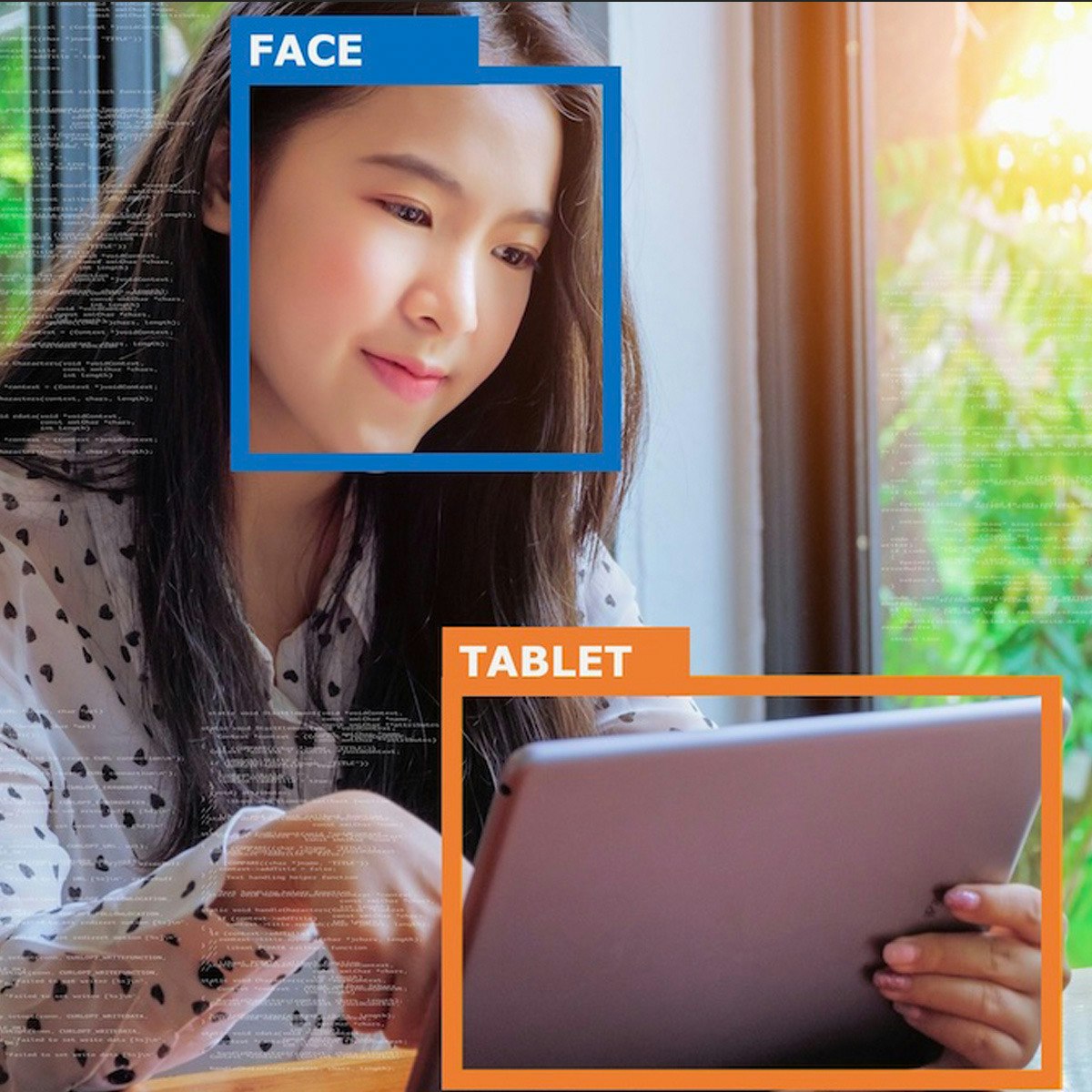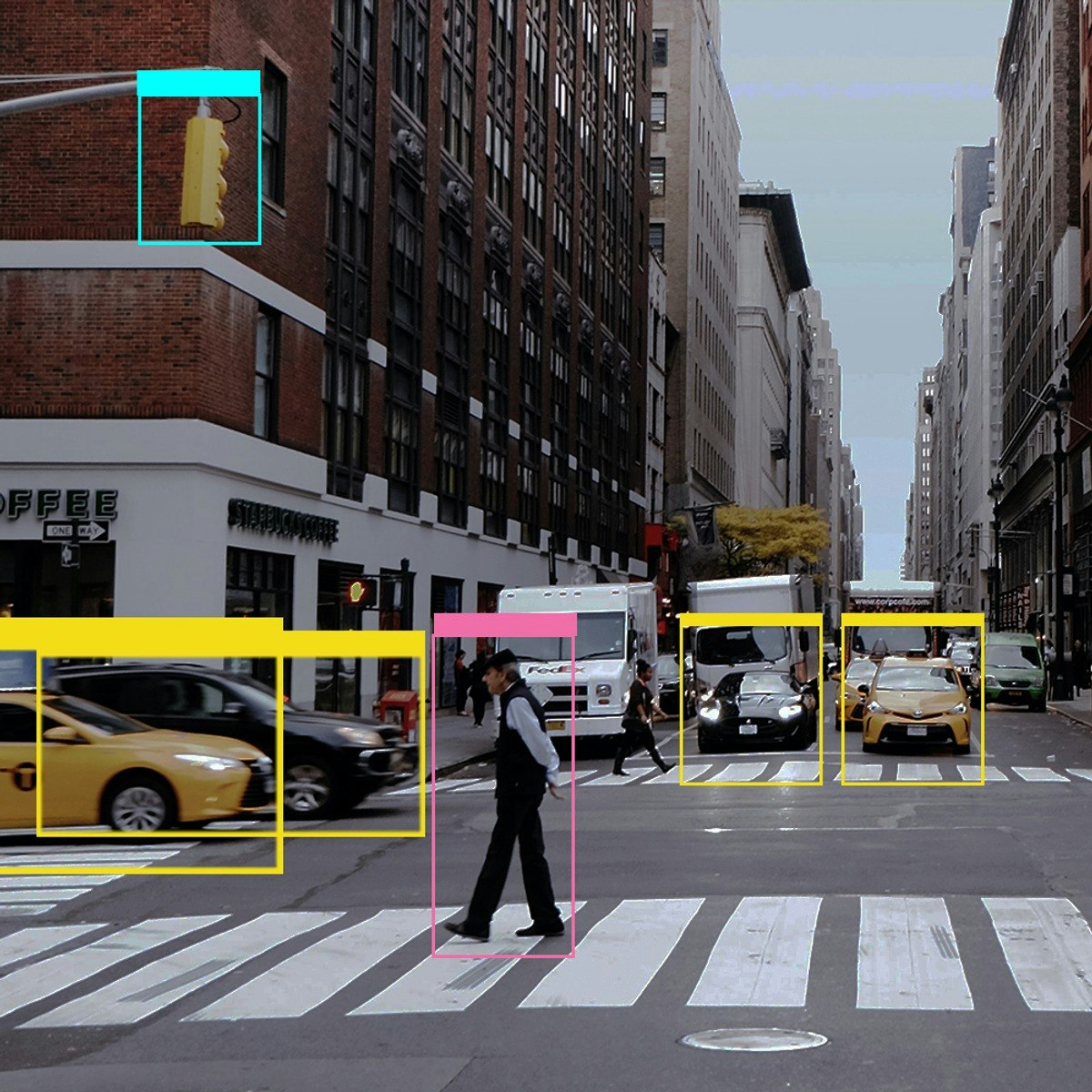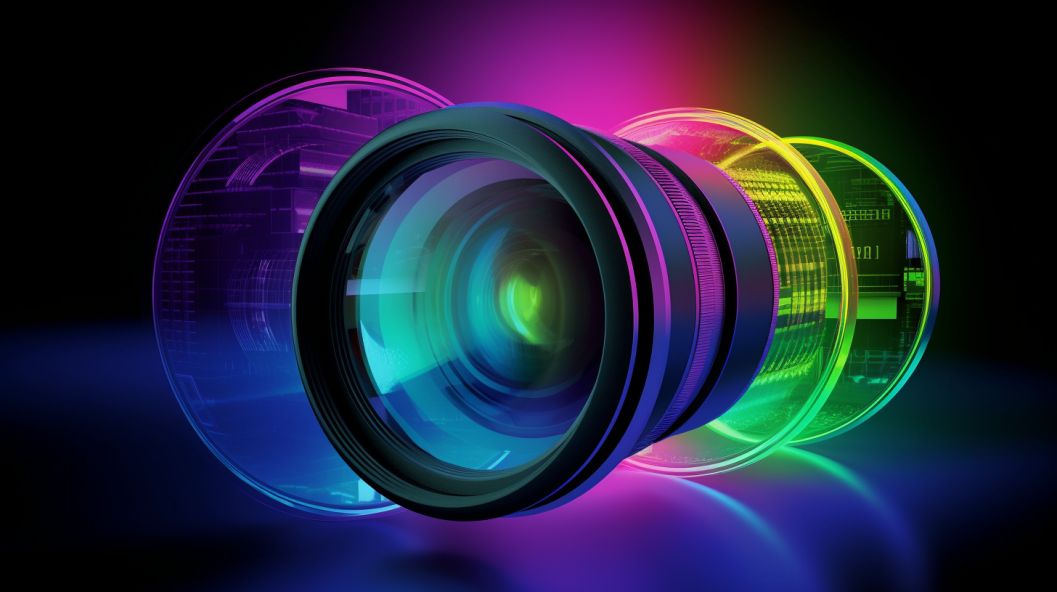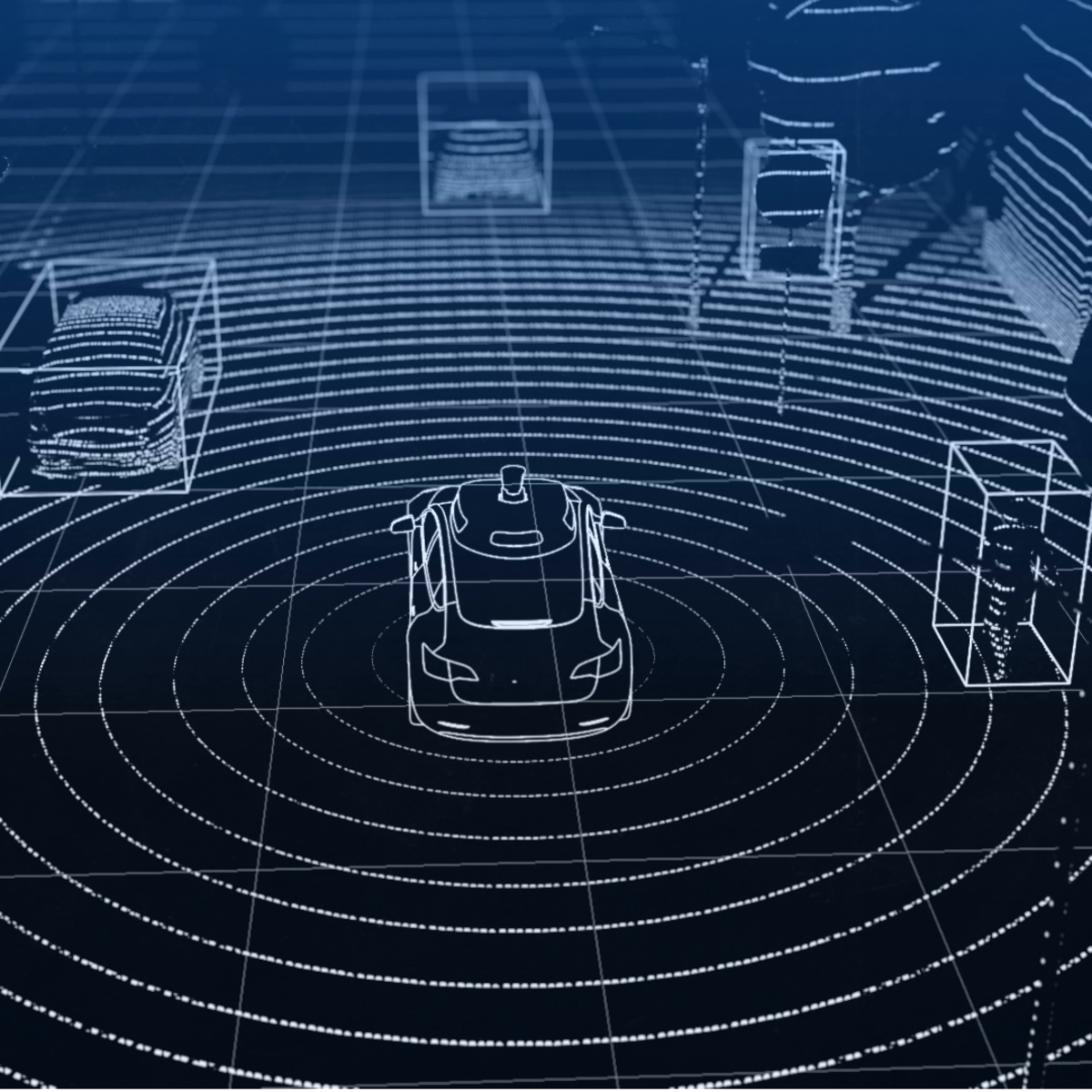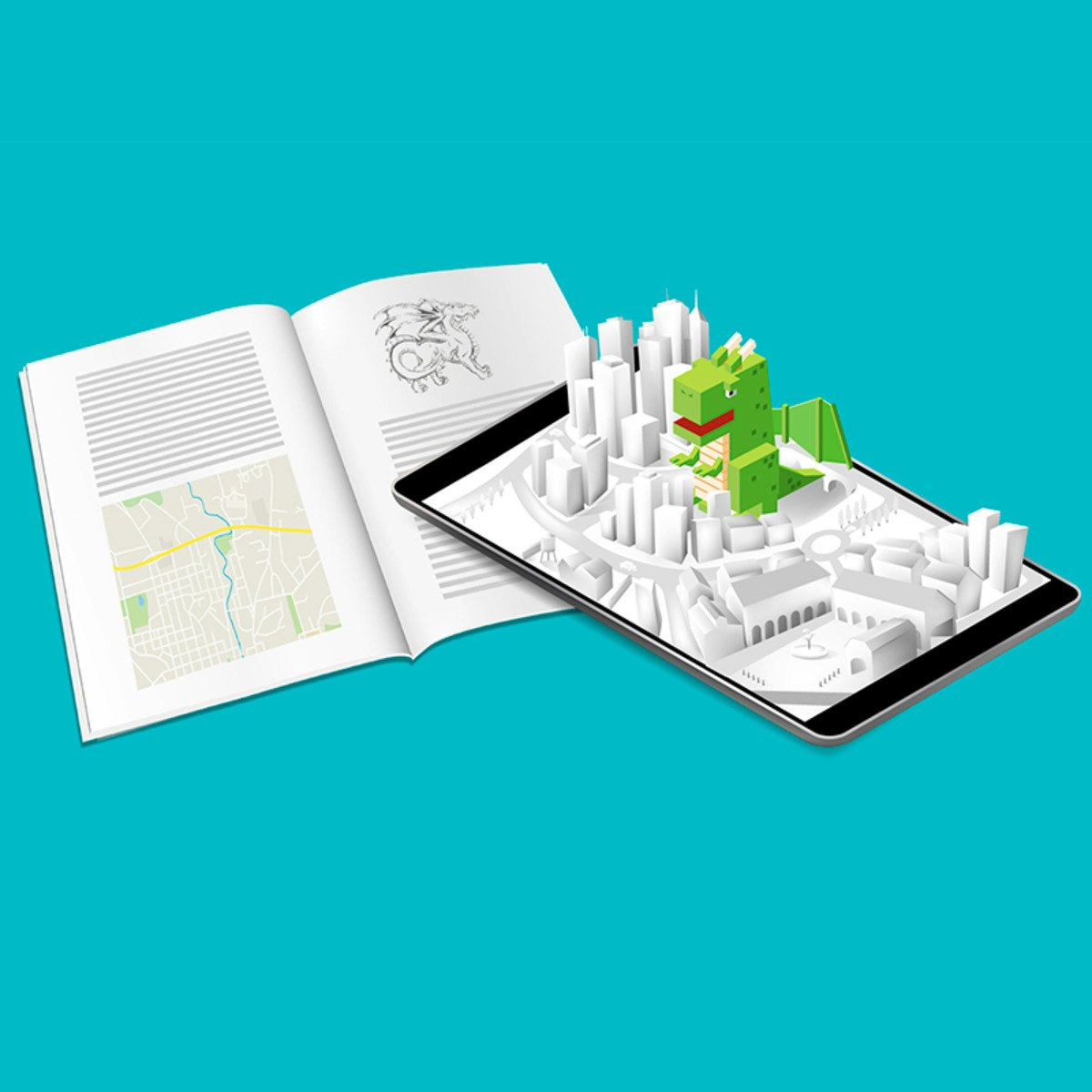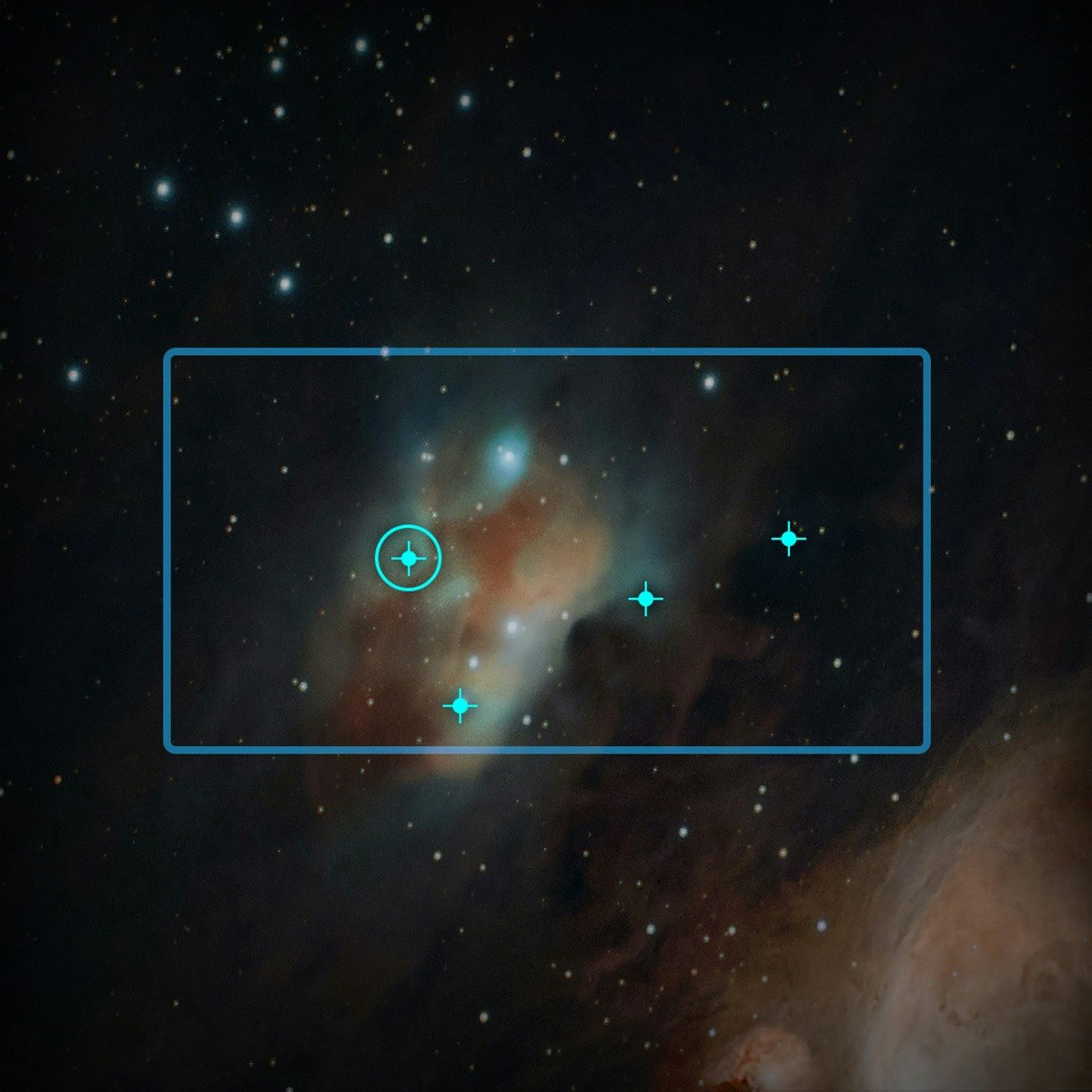Object Tracking
An In-Depth Guide to Object Tracking: From Pixels to Pathways
Object tracking is a fundamental task in computer vision that involves locating and following one or more moving objects over time within a sequence of images or video frames. Its purpose extends beyond simply identifying objects; it aims to maintain their identity and trajectory as they move, interact, or are temporarily obscured. This technology forms the backbone of countless applications, transforming how we interact with the digital and physical world. From the smart features in your phone's camera to the complex systems guiding autonomous vehicles, object tracking is an increasingly integral part of modern technology.
Working in the field of object tracking can be exceptionally engaging. Imagine developing algorithms that enable a self-driving car to navigate a busy street safely, or creating systems that help doctors monitor patient movements for diagnostic purposes. The thrill of solving complex visual puzzles and seeing your work translate into tangible, impactful solutions is a significant draw. Furthermore, the field is constantly evolving with advancements in artificial intelligence and sensor technology, offering continuous learning opportunities and the chance to be at forefront of innovation.
Introduction to Object Tracking
This section provides a foundational understanding of object tracking, exploring its definition, historical development, and the diverse industries that depend on its capabilities.
Defining Object Tracking and Its Purpose
At its core, object tracking is the process of identifying the position of an object or multiple objects in a series of video frames. Once an object is detected in an initial frame, the tracking algorithm's goal is to follow that object as it moves, changes appearance, or interacts with other objects in subsequent frames. This involves not just detection in each frame, but also associating the detections of the same object across different frames, a process known as data association.
The primary purpose of object tracking is to generate a cohesive understanding of dynamic scenes. This understanding can be used for various higher-level tasks such as behavior analysis, activity recognition, and automated surveillance. For instance, tracking pedestrians can help in urban planning by analyzing foot traffic patterns, while tracking a specific vehicle can be crucial for law enforcement. The information derived from tracking includes the object's path, speed, and interaction patterns, providing rich contextual data about the observed environment.
Object tracking is an interdisciplinary field, drawing heavily from computer vision, image processing, signal processing, and increasingly, artificial intelligence and machine learning. The complexity of the task arises from numerous challenges, including changes in object appearance, illumination variations, occlusions (where objects are hidden by others), and the need for real-time processing in many applications.
Historical Evolution of Tracking Technologies
The journey of object tracking technologies began with relatively simple approaches. Early methods in the mid-20th century focused on detecting changes between consecutive frames or tracking bright spots in controlled environments. These techniques were often computationally intensive for the hardware of the time and limited in their applicability to complex, real-world scenarios.
Significant advancements came with the development of more robust algorithms in the late 20th century. Methods based on correlation filters, optical flow (which estimates motion between frames), and mean-shift (an algorithm for finding the densest region in a feature space) became popular. The introduction and refinement of Bayesian filtering techniques, particularly the Kalman filter and later the particle filter, provided a probabilistic framework for predicting and updating an object's state, allowing for more resilient tracking in the presence of noise and uncertainty.
The most recent and transformative leap in object tracking has been driven by the advent of deep learning. Convolutional Neural Networks (CNNs) have revolutionized object detection, providing highly accurate bounding boxes for objects. Recurrent Neural Networks (RNNs) and Long Short-Term Memory (LSTM) networks are being used to model the temporal dynamics of object motion. These AI-powered methods have dramatically improved tracking performance, especially in challenging conditions, and continue to be an active area of research and development.
Key Industries Relying on Object Tracking
Object tracking is no longer a niche academic pursuit; it is a critical technology underpinning operations in a wide array of industries. The ability to automatically follow and analyze moving entities has unlocked new efficiencies, capabilities, and insights.
One of the most prominent sectors is transportation, particularly with the rise of autonomous vehicles and advanced driver-assistance systems (ADAS). These systems rely heavily on tracking other vehicles, pedestrians, cyclists, and obstacles to navigate safely. In logistics and warehousing, object tracking is used to monitor goods, manage inventory, and automate robotic systems for sorting and delivery.
Security and surveillance represent another major application area. From monitoring public spaces for safety to securing critical infrastructure, object tracking algorithms help detect and follow suspicious activities or individuals. In entertainment and sports, tracking technology enhances broadcasts with player statistics, creates immersive augmented reality experiences, and provides data for performance analysis. Healthcare also benefits, with applications ranging from patient monitoring and fall detection to computer-assisted surgery where instruments and anatomical features are tracked with high precision.
Core Techniques in Object Tracking
Understanding the methodologies behind object tracking is key to appreciating its capabilities and limitations. This section delves into the foundational classical approaches, the powerful deep learning methods, and the hybrid models that combine their strengths.
Classical Approaches: The Foundation
Before the widespread adoption of deep learning, classical algorithms formed the bedrock of object tracking. Among the most influential is the Kalman Filter. It is a recursive Bayesian filter that estimates the state of a dynamic system from a series of incomplete and noisy measurements. In the context of object tracking, the "state" might include an object's position and velocity. The Kalman Filter works in a predict-update cycle: it predicts the object's next state based on its current state and a motion model, and then updates this prediction using the latest measurement (e.g., a new detection of the object).
To explain like I'm 5 (ELI5): Imagine you're trying to guess where a friend, who is hidden behind a curtain, will pop out next. You saw them moving to the right before they went behind the curtain (prediction). Then, you see a tiny bit of their shoe appear slightly to the right of where you guessed (measurement). The Kalman Filter helps you combine your guess and what you actually saw to make a better guess for the next time.
Other Bayesian methods, like Particle Filters (also known as Sequential Monte Carlo methods), offer more flexibility than Kalman Filters, particularly for non-linear motion and non-Gaussian noise, by representing the probability distribution of the object's state with a set of weighted samples (particles). These classical techniques are often computationally efficient and can perform well in scenarios with predictable motion and clear observations.
These courses provide a solid understanding of foundational tracking concepts, including Kalman Filters.
For those looking for foundational texts, these books cover many classical computer vision and signal processing techniques relevant to tracking.
The Rise of Deep Learning
Deep learning has revolutionized object tracking by enabling systems to learn complex features and motion patterns directly from data. Convolutional Neural Networks (CNNs) are primarily used for object detection, which is often the first step in a "tracking-by-detection" paradigm. Networks like YOLO (You Only Look Once), SSD (Single Shot MultiBox Detector), and Faster R-CNN can identify and locate objects in an image with high accuracy by outputting bounding boxes and class labels.
Once objects are detected, the challenge is to associate these detections across frames. Some deep learning approaches integrate detection and tracking into a single network. Recurrent Neural Networks (RNNs), particularly Long Short-Term Memory (LSTM) units, are well-suited for this as they can process sequential data, like the history of an object's positions and appearances, to predict its future location or maintain its identity even through occlusions or appearance changes.
Siamese networks are another popular deep learning architecture for tracking. They learn a similarity function that can compare an initial template of the object with candidate regions in subsequent frames, allowing the tracker to follow the object based on appearance similarity. The rapid advancements in deep learning continue to push the boundaries of tracking performance, enabling more robust and accurate systems in increasingly complex environments.
Online courses are an excellent way to get started with deep learning for object tracking.
Further explore the broader fields that underpin these techniques.
Hybrid Models: The Best of Both Worlds
While deep learning offers powerful feature representation and learning capabilities, classical methods like Kalman and particle filters excel at modeling motion and handling uncertainty in a principled probabilistic framework. Consequently, hybrid models that combine the strengths of both classical and AI-driven approaches are becoming increasingly common and effective.
In a typical hybrid system, a deep learning model (e.g., a CNN) might be used for robust object detection and appearance feature extraction. These detections and features then serve as inputs to a classical tracking algorithm (e.g., a Kalman filter or a more sophisticated Bayesian tracker) which handles the state estimation, motion prediction, and data association. For example, a deep learning model might provide the "measurement" for a Kalman filter's update step.
This combination can lead to trackers that are both accurate (due to deep learning's representational power) and robust to noisy detections or short occlusions (due to the filtering and prediction capabilities of classical methods). Hybrid models often strike a good balance between performance and computational efficiency, making them suitable for a wide range of real-world applications where neither approach alone is sufficient.
Many advanced courses touch upon these integrated approaches, often building upon foundational knowledge in both areas.
These books provide comprehensive overviews that often cover both classical and modern techniques.
Applications of Object Tracking Systems
Object tracking systems are not just theoretical constructs; they are deployed across numerous sectors, driving innovation and solving real-world problems. This section highlights some key application domains.
Enhancing Safety and Security
In the realm of safety and security, object tracking is indispensable. Modern surveillance systems utilize these technologies to monitor public spaces, critical infrastructure, and commercial properties. By tracking individuals and vehicles, security personnel can detect anomalous behavior, identify potential threats, and respond more effectively to incidents. For instance, a system might be configured to alert operators if a person enters a restricted area or if a vehicle is moving erratically.
Beyond general surveillance, object tracking plays a crucial role in access control systems, where it can be combined with facial recognition to verify identities. It's also used in forensic analysis to reconstruct events from video footage. The ability to reliably track objects over extended periods, even in crowded or challenging conditions, is paramount for these applications, contributing to safer environments and more efficient security operations.
OpenCourser features courses that can help you understand the building blocks for such systems, like people counting.
Revolutionizing Transportation and Logistics
The transportation sector is undergoing a massive transformation, largely driven by advancements in object tracking. Robotics and autonomous vehicles, including self-driving cars, drones, and delivery robots, rely on sophisticated perception systems where object tracking is a core component. These systems must accurately detect and track other vehicles, pedestrians, cyclists, road signs, and various obstacles to navigate safely and efficiently.
In logistics and supply chain management, object tracking optimizes operations by monitoring the movement of goods, assets, and personnel. This can involve tracking packages within a warehouse, managing fleets of vehicles, or ensuring the timely delivery of products. The insights gained from tracking data help businesses improve efficiency, reduce costs, and enhance customer satisfaction. Furthermore, traffic management systems use object tracking to monitor vehicle flow, detect congestion, and optimize traffic signal timing for smoother urban mobility.
Courses focusing on visual perception for autonomous systems are highly relevant here.
This book offers insights into the broader field of robotics, where vision and control are key.
Innovations in Entertainment, Sports, and Healthcare
Object tracking is also making significant inroads into entertainment, sports, and healthcare. In sports analytics, tracking systems follow players and the ball to generate real-time statistics, visualize tactics, and provide data for coaching and performance improvement. Broadcasters use this technology to enhance replays and offer viewers deeper insights into the game.
Augmented Reality (AR) and Virtual Reality (VR) experiences heavily depend on tracking the user's movements and the position of virtual objects within the real world. This enables interactive and immersive applications in gaming, education, and industrial training. In healthcare, object tracking assists in various ways, from monitoring patient movements for rehabilitation and fall detection to guiding surgical instruments with high precision in computer-assisted surgery. It also aids in analyzing cellular movements in microscopy for biomedical research.
For those interested in the intersection of tracking and interactive experiences, AR courses can be a good starting point.
Challenges in Object Tracking
Despite significant progress, developing robust and reliable object tracking systems remains a challenging endeavor. This section explores some of the persistent technical hurdles that researchers and engineers strive to overcome.
The Hurdles of Perception: Occlusion and Re-Identification
One of the most significant challenges in object tracking is occlusion, which occurs when an object being tracked is partially or fully hidden from view by another object or by itself (self-occlusion). When an object is occluded, its appearance features are lost, making it difficult for the tracker to maintain its trajectory. Algorithms must be able to predict the object's path during occlusion and correctly re-acquire it once it becomes visible again.
Closely related is the problem of object re-identification (Re-ID). If a tracker loses an object (perhaps due to prolonged occlusion or abrupt appearance change) and later detects an object that might be the same one, it needs a reliable way to determine if it is indeed the same object. This is particularly difficult in crowded scenes with many similar-looking objects. Developing robust appearance models that are invariant to changes in viewpoint, illumination, and partial occlusion is crucial for effective re-identification.
These challenges require sophisticated algorithms that can reason about object permanence and appearance changes over time.
The Need for Speed: Real-Time Processing
Many object tracking applications, such as autonomous driving, robotics, and interactive systems, demand real-time processing. This means the tracking algorithm must process incoming video frames and update object states at a rate that keeps pace with the real world, typically 15 to 30 frames per second or even higher for some applications. However, many advanced tracking algorithms, especially those based on complex deep learning models, can be computationally intensive.
Achieving real-time performance often involves a trade-off between accuracy and speed. Developers must carefully select or design algorithms that meet the specific latency requirements of their application without overly compromising tracking quality. This may involve optimizing code, utilizing specialized hardware like GPUs or FPGAs, or developing more efficient model architectures and algorithmic shortcuts. The ongoing research into model compression, quantization, and efficient network design is vital for enabling real-time tracking on resource-constrained devices.
The constraints of processing on different types of hardware, including cameras themselves, are an important consideration.
Scaling Up: Tracking Multiple Objects in Complex Scenes
Tracking a single, well-defined object in a simple environment is one thing; tracking multiple objects simultaneously in a complex, dynamic scene is a far greater challenge. As the number of objects increases, the computational load grows, and the complexity of data association—correctly assigning detections to existing tracks—escalates significantly. Objects may interact, occlude each other frequently, and enter or leave the scene at any time.
In crowded scenes, objects can appear very similar, leading to identity switches where the tracker mistakenly swaps the identities of two objects. Handling a variable number of objects, initializing new tracks for appearing objects, and terminating tracks for disappearing objects robustly are also critical aspects of multi-object tracking (MOT). Scalability in terms of both the number of objects and the complexity of their interactions remains an active area of research, pushing for more sophisticated data association techniques and scene understanding capabilities.
These books delve into the complexities of computer vision, which often address these scaling issues.
Ethical Considerations in Object Tracking
As object tracking technologies become more powerful and pervasive, it is crucial to address the ethical implications associated with their use. This section discusses concerns related to privacy, algorithmic bias, and the evolving regulatory landscape.
Privacy in a Tracked World
The widespread deployment of object tracking systems, particularly in surveillance applications, raises significant privacy concerns. These systems can collect vast amounts of data about individuals' movements, activities, and associations, often without their explicit consent or awareness. This data can be used to create detailed profiles, infer personal information, and monitor behavior, potentially leading to a chilling effect on freedom of expression and assembly.
The potential for misuse of tracking data by governments or private entities is a serious issue. Ensuring that data collection is proportionate, that data is anonymized or pseudonymized where possible, and that individuals have control over their personal information are key challenges. Transparency about how and why tracking technologies are being used, along with robust data protection measures, is essential to build public trust and safeguard individual privacy rights. Exploring privacy-preserving tracking techniques, such as federated learning or on-device processing, is an important avenue of research.
Organizations like the Electronic Frontier Foundation (EFF) and the American Civil Liberties Union (ACLU) frequently publish resources on surveillance technologies and privacy. While not on the allowed domain list for direct linking in this context, their work highlights the societal debate.
Algorithmic Bias and Fairness
Object tracking systems, especially those based on AI and machine learning, are susceptible to algorithmic bias. If the data used to train these models is not representative of the diverse populations they will encounter in the real world, the systems may perform less accurately for certain demographic groups. For example, a facial recognition component linked to a tracking system might be less accurate for individuals with darker skin tones or for specific genders if the training dataset was predominantly composed of one group.
Such biases can lead to unfair or discriminatory outcomes, such as certain groups being disproportionately misidentified or targeted by surveillance. Addressing algorithmic bias requires careful attention to data collection and annotation processes, the development of fairness-aware machine learning algorithms, and rigorous testing and auditing of systems across diverse populations. The goal is to create tracking technologies that are equitable and do not perpetuate or amplify existing societal biases. According to a report by the Brookings Institution, addressing algorithmic bias is a key challenge for AI governance.
Ensuring fairness in AI is a major focus of many research institutions and ethical AI initiatives.
Navigating the Regulatory Landscape
In response to the growing capabilities and societal impact of AI technologies like object tracking, governments and regulatory bodies worldwide are developing legal and ethical frameworks. The General Data Protection Regulation (GDPR) in Europe, for example, imposes strict rules on the collection and processing of personal data, which has significant implications for how tracking systems that handle identifiable information can be designed and deployed.
More recently, initiatives like the European Union's proposed AI Act aim to establish a comprehensive regulatory framework for artificial intelligence, categorizing AI systems based on their risk level and imposing corresponding obligations on developers and deployers. Understanding and complying with these evolving regulations is crucial for organizations working with object tracking technologies. Beyond legal requirements, adhering to ethical guidelines and best practices for responsible AI development and deployment is vital to ensure that these powerful tools are used in a way that benefits society while mitigating potential harms. Many companies are also adopting internal AI ethics boards and principles to guide their work. Information on the AI Act can often be found on official EU websites or through reputable news sources covering technology policy.
You may explore the broader field of Artificial Intelligence to understand its societal impact better.
Career Pathways in Object Tracking
The field of object tracking offers diverse and exciting career opportunities for individuals with the right skills and passion. As this technology becomes more integrated into various industries, the demand for professionals who can develop, implement, and manage tracking systems is growing. If you're considering a career in this area, it's a path that requires dedication and continuous learning, but the rewards can be substantial, both intellectually and professionally.
Navigating a career transition or starting fresh can feel daunting, but the skills you acquire in object tracking are highly transferable and sought after. Remember that every expert was once a beginner. Setting realistic goals, focusing on building a strong foundation, and persistently seeking opportunities to apply your knowledge will pave the way for a fulfilling career. Don't be discouraged by the complexity; embrace it as a chance to solve meaningful problems.
Academic Research Roles (PhD Tracks)
For those deeply passionate about pushing the boundaries of knowledge in object tracking, a career in academic research can be highly rewarding. This typically involves pursuing a Ph.D. in Computer Science, Electrical Engineering, or a related field with a specialization in computer vision, machine learning, or robotics. Researchers in academia work on developing novel algorithms, theoretical models, and experimental methodologies to address the fundamental challenges in object tracking.
Academic roles often involve teaching, mentoring students, writing grant proposals, and publishing research in top-tier conferences and journals like CVPR, ICCV, and ECCV. This path allows for intellectual freedom and the opportunity to contribute to the foundational science that underpins future technological advancements. Collaborations with industry partners are also common, providing avenues to see research translate into real-world impact.
OpenCourser can help you find foundational courses that might be prerequisites for advanced academic study, such as those in Mathematics or Computer Science.
Industry Positions in Computer Vision Engineering
The majority of job opportunities in object tracking are found in industry. A common role is that of a Computer Vision Engineer. These professionals are responsible for designing, developing, and implementing computer vision algorithms, including object tracking, for various applications. This could involve working on self-driving cars, robotics systems, surveillance products, augmented reality applications, or medical imaging devices.
Computer Vision Engineers typically need a strong background in programming (often Python and C++), machine learning, deep learning frameworks (like TensorFlow or PyTorch), and classical computer vision techniques. They work on the entire lifecycle of a project, from conceptualization and algorithm development to testing, deployment, and optimization. The work is often team-based and requires strong problem-solving skills and the ability to adapt to new technologies quickly.
Here are some relevant career paths you might explore:
Consulting in AI Implementation
As more businesses seek to leverage the power of AI and computer vision, there's a growing demand for consultants who can help them implement object tracking and related technologies. AI consultants work with clients across various industries to understand their business needs, identify opportunities where object tracking can add value, and develop strategies for its successful adoption.
This role requires a blend of technical expertise, business acumen, and communication skills. Consultants might be involved in assessing existing systems, recommending appropriate technologies, managing implementation projects, and helping organizations navigate the ethical and practical challenges of deploying AI. It's a dynamic career path that offers exposure to a wide range of problems and industries, suitable for those who enjoy problem-solving and client interaction.
Many professionals in this area often start in more technical roles and then transition into consulting as they gain experience and a broader understanding of business applications.
Educational Requirements for Object Tracking
Embarking on a career in object tracking requires a solid educational foundation, combining theoretical knowledge with practical skills. Whether through formal degrees or dedicated self-learning, acquiring the necessary competencies is key.
Relevant Degrees and Foundational Knowledge
A bachelor's degree in Computer Science, Software Engineering, Electrical Engineering, or a closely related field is typically the minimum educational requirement for entry-level positions in object tracking. Many advanced roles, particularly in research or specialized algorithm development, may require a Master's or Ph.D. degree with a focus on computer vision, machine learning, artificial intelligence, or robotics.
Regardless of the specific degree, a strong grounding in mathematics is essential. Key areas include linear algebra, calculus, probability, and statistics, as these form the basis for many tracking algorithms and machine learning models. Core computer science concepts such as data structures, algorithms, and software engineering principles are also crucial. Familiarity with signal processing can also be beneficial, especially for understanding sensor data and classical filtering techniques.
For those starting their journey, foundational courses in computer vision can provide a broad overview.
Specialized Certifications and Technical Skills
Beyond formal degrees, specialized certifications in machine learning, deep learning, or specific vendor technologies can enhance your credentials and demonstrate proficiency in key areas. More importantly, practical technical skills are paramount. Proficiency in programming languages is a must, with Python being widely used for its extensive libraries in machine learning and computer vision (e.g., NumPy, SciPy, OpenCV, TensorFlow, PyTorch), and C++ often preferred for performance-critical applications and embedded systems.
Familiarity with OpenCV (Open Source Computer Vision Library) is almost a standard requirement, as it provides a vast collection of tools and algorithms for image processing and computer vision tasks, including object tracking. Experience with deep learning frameworks like TensorFlow and PyTorch is increasingly important for developing and deploying modern tracking solutions. Understanding version control systems like Git is also essential for collaborative software development.
Practical courses that teach these tools are invaluable.
These books offer practical guidance on using libraries like OpenCV.
The Power of Practical Experience: Portfolio Projects
Theoretical knowledge is important, but employers in the field of object tracking place a high value on practical experience. Building a portfolio of hands-on projects is one of the most effective ways to demonstrate your skills and passion. These projects allow you to apply what you've learned, tackle real-world challenges, and showcase your ability to develop working solutions.
Portfolio projects can range from implementing classical tracking algorithms like Kalman filters from scratch, to building a deep learning-based object detector and tracker for a specific application (e.g., tracking cars in street footage, or pets in your home). You could also contribute to existing open-source object tracking projects or participate in online competitions. When building your portfolio, focus on projects that are interesting to you and allow you to explore different aspects of object tracking. Document your projects clearly, explain your design choices, and make your code available (e.g., on GitHub) if possible. A strong portfolio can significantly boost your chances when applying for jobs or internships.
OpenCourser's Learner's Guide offers tips on how to structure your learning and build a compelling portfolio.
Online Learning in Object Tracking
The rise of online learning platforms has made acquiring knowledge and skills in specialized fields like object tracking more accessible than ever. These resources can be invaluable for self-taught professionals, career changers, and students looking to supplement their formal education.
Leveraging MOOCs and Online Courses
Massive Open Online Courses (MOOCs) and other online course platforms offer a wealth of material on computer vision, machine learning, deep learning, and specific object tracking techniques. Platforms like Coursera, edX, Udacity, and Udemy host courses from top universities and industry experts, often at a fraction of the cost of traditional degree programs. These courses can help build foundational knowledge, teach specific algorithms (like Kalman filters or YOLO), and provide hands-on experience with tools like OpenCV and PyTorch.
Online courses are particularly suitable for individuals who need flexibility in their learning schedule. They allow you to learn at your own pace and often provide certificates of completion that can be added to your resume or LinkedIn profile. Professionals already in the workforce can use these courses to upskill or reskill, keeping abreast of the latest advancements in this rapidly evolving field. OpenCourser is an excellent starting point to discover and compare online courses tailored to your learning goals in object tracking and related areas like Artificial Intelligence.
Here are some courses available through online platforms that cover aspects of object tracking and computer vision:
Gaining Practical Skills Through Open Source
Beyond structured courses, the open-source community provides immense opportunities for learning and gaining practical experience in object tracking. Many state-of-the-art tracking algorithms and computer vision libraries (like OpenCV itself) are open source. Engaging with these projects by studying their code, trying to adapt them for your own purposes, or even contributing bug fixes or new features can be an incredibly valuable learning experience.
Platforms like GitHub host countless open-source projects related to object tracking. You can find implementations of various algorithms, datasets for experimentation, and active communities of developers. Working with open-source software helps you understand how real-world systems are built, exposes you to best practices in software development, and allows you to collaborate with and learn from others in the field. This kind of practical, hands-on engagement is highly regarded by employers.
This book specifically covers an open-source library vital to the field.
Complementing Formal Education with Online Resources
For students enrolled in traditional academic programs, online resources can serve as a powerful supplement. University curricula may not always cover the very latest techniques or provide in-depth training on specific industry tools. Online courses can fill these gaps, allowing students to delve deeper into topics of interest or gain practical skills that make them more competitive in the job market.
For example, a computer science student might take an online specialization in deep learning to complement their university coursework in AI. Similarly, online tutorials and project-based courses can provide the hands-on experience that is sometimes lacking in more theoretical academic programs. Blending formal education with self-directed online learning creates a well-rounded skill set and demonstrates initiative and a passion for continuous improvement, qualities highly valued by employers in the tech industry.
Consider courses that provide introductions to related technologies like Augmented Reality or specific tools.
Future Directions in Object Tracking
The field of object tracking is dynamic, with ongoing research and development continually pushing its capabilities. This section looks at some of the key trends and future directions that are shaping the next generation of tracking systems.
Tracking at the Edge
A significant trend is the move towards edge computing for object tracking. This involves performing the tracking computations directly on or near the device where the sensor data is captured (e.g., on a smart camera, a drone, or within a car's onboard system) rather than sending data to a centralized cloud server for processing. Tracking at the edge offers several advantages, including lower latency (critical for real-time applications), reduced bandwidth requirements, and enhanced privacy and security since sensitive video data may not need to leave the local device.
However, edge devices typically have limited computational resources (processing power, memory, energy) compared to cloud servers. This necessitates the development of highly efficient tracking algorithms and lightweight deep learning models that can deliver good performance under these constraints. Techniques like model quantization, pruning, and specialized hardware accelerators for AI are key enablers for effective edge-based object tracking.
The World Economic Forum has highlighted the transformative potential of edge computing across various industries.
Beyond 2D: The Rise of 3D Object Tracking
While much of object tracking has historically focused on 2D images and video, there is a growing emphasis on 3D object tracking. This involves tracking objects in three-dimensional space, providing a much richer understanding of the scene, including an object's position, orientation, and size in 3D. This is crucial for applications like autonomous navigation (where knowing the precise 3D location of other vehicles and pedestrians is vital), robotics (for manipulation and interaction with the environment), and augmented reality (for realistic placement of virtual objects).
Advancements in 3D sensing technologies, such as LiDAR (Light Detection and Ranging), stereo cameras, and depth cameras (like Time-of-Flight sensors), are fueling progress in 3D object tracking. The challenges include processing large 3D point clouds, fusing data from multiple sensor modalities, and developing robust algorithms that can handle the increased dimensionality and complexity of 3D data. As 3D sensors become more affordable and widespread, 3D object tracking is expected to become increasingly prevalent.
Further explore 3D modeling concepts that are relevant to this space.
The Imperative of Ethical and Explainable AI
As object tracking systems become more capable and autonomous, the need for ethical and explainable AI (XAI) becomes even more critical. Future developments will likely see a stronger focus on ensuring that tracking systems are not only accurate but also fair, transparent, accountable, and respectful of human values. This involves addressing issues of algorithmic bias, ensuring privacy, and providing mechanisms for understanding why a system makes particular tracking decisions.
Explainable AI techniques aim to make the internal workings of complex models, like deep neural networks, more interpretable to humans. In the context of object tracking, XAI could help debug systems, build trust with users, and ensure that decisions (e.g., identifying a person as suspicious) are based on valid reasons rather than spurious correlations or biases in the data. The development and adoption of industry standards, ethical guidelines, and robust auditing processes will be essential to guide the responsible evolution of object tracking technology. According to Gartner, AI trust, risk, and security management (AI TRiSM) is a key trend, emphasizing the importance of responsible AI.
A foundational understanding of image processing can be helpful in this context.
This book covers a specific technique that has implications for action understanding, which relates to higher-level interpretations of tracking data.
FAQ: Career Development in Object Tracking
Navigating a career in the specialized field of object tracking can bring up many questions. This section aims to answer some common queries from job seekers and early-career professionals.
What programming languages are essential?
For a career in object tracking, proficiency in certain programming languages is vital. Python is overwhelmingly popular due to its simplicity, extensive libraries for scientific computing, machine learning (Scikit-learn, TensorFlow, PyTorch), and computer vision (OpenCV, Pillow). It's excellent for rapid prototyping, research, and developing AI models.
C++ is also highly important, especially for performance-critical applications, embedded systems (like those in autonomous vehicles or drones), and when you need low-level control over hardware. Many core computer vision libraries, including parts of OpenCV, are written in C++, and understanding it allows for optimization and integration with larger systems.
Depending on the specific role or industry, familiarity with other languages like MATLAB (common in research and for prototyping), Java, or Swift (for mobile applications incorporating tracking features) might also be beneficial. However, Python and C++ form the primary toolkit for most object tracking engineers.
What should an entry-level portfolio include?
An entry-level portfolio for an object tracking role should showcase your understanding of fundamental concepts and your ability to implement them. It's less about solving groundbreaking research problems and more about demonstrating core competencies. Include projects where you've implemented basic tracking algorithms, such as a Kalman filter tracker or a simple correlation-based tracker.
Showcase your experience with object detection, perhaps by training a small YOLO or SSD model on a custom dataset and then using it as part of a tracking-by-detection pipeline. Document your projects well: explain the problem, your approach, the tools and libraries used (e.g., OpenCV, Python, TensorFlow/PyTorch), and any challenges you faced. Make your code available on a platform like GitHub. Quality, clarity, and demonstrated problem-solving are more important than the sheer number of projects.
Remember, OpenCourser's "Save to list" feature can help you organize courses and resources as you build your knowledge base for these portfolio projects.
What are the salary expectations?
Salary expectations in object tracking, like in many tech fields, can vary significantly based on several factors. These include geographic location (salaries in major tech hubs are generally higher), years of experience, level of education (MS or PhD often command higher salaries), the specific industry (e.g., autonomous vehicles vs. retail analytics), and the size and type of the company.
Generally, roles in computer vision and machine learning, including those focused on object tracking, are well-compensated due to the specialized skills required and high demand. Entry-level positions might start competitively, with significant increases as you gain experience and expertise. For specific salary data, it's advisable to consult resources like the U.S. Bureau of Labor Statistics (BLS) for related roles such as "Software Developers" or "Computer and Information Research Scientists," or look at salary aggregators like Glassdoor or Levels.fyi, filtering by location and relevant job titles (e.g., Computer Vision Engineer). The Occupational Outlook Handbook from the BLS can provide general career information and salary ranges for broader categories.
Explore related career paths to understand the broader landscape.
Are remote work opportunities common?
The prevalence of remote work opportunities in object tracking has increased, mirroring broader trends in the technology industry. Many aspects of object tracking development, such as algorithm design, software implementation, model training, and data analysis, can be performed effectively from a remote location. Companies, especially software-focused ones or those with distributed teams, are increasingly open to hiring remote talent.
However, some roles might have limitations. If the position involves significant work with physical hardware (e.g., robotics, sensor calibration in autonomous vehicles, setting up specialized camera systems), on-site presence may be necessary, at least periodically. Research roles that require access to specific lab equipment might also be less conducive to fully remote work. When job searching, look carefully at the job descriptions, as companies usually specify if a role is remote, hybrid, or on-site.
Even in remote roles, strong communication and collaboration skills are paramount for working effectively with a distributed team.
How can I stay updated and continue learning?
The field of object tracking is rapidly evolving, so continuous learning is essential. Stay updated by following leading academic conferences in computer vision and AI, such as CVPR (Conference on Computer Vision and Pattern Recognition), ICCV (International Conference on Computer Vision), ECCV (European Conference on Computer Vision), and NeurIPS (Neural Information Processing Systems). Many papers from these conferences are available on arXiv.org preprint server.
Follow blogs and publications from research labs, universities, and leading tech companies in the field. Engage with online communities on platforms like Reddit (e.g., r/computervision, r/MachineLearning), Stack Overflow, or specialized forums. Taking advanced online courses or workshops on new techniques or tools can also be beneficial. Experimenting with new algorithms and contributing to open-source projects are excellent ways to apply new knowledge and keep your skills sharp.
Reading books that cover emerging topics or provide deep dives into specific areas is also a valuable strategy.
What are effective ways to network in the AI/ML community?
Networking is crucial for career growth, learning opportunities, and staying connected with the latest developments. In the AI/ML and computer vision communities, you can network by attending virtual or in-person conferences, workshops, and seminars. These events often provide opportunities to interact with researchers, industry professionals, and potential employers.
Join professional organizations like the IEEE Computer Society or ACM SIGAI. Participate actively in online communities and forums; thoughtful contributions can lead to valuable connections. LinkedIn is a powerful tool for connecting with professionals in your field and following companies you're interested in. Consider attending local meetups or user groups focused on AI, machine learning, or specific technologies (e.g., Python user groups). Contributing to open-source projects can also be a great way to collaborate with others and gain visibility within the community.
Don't underestimate the power of informational interviews – reaching out to people working in roles or companies that interest you can provide invaluable insights and connections.
Object tracking is a challenging yet immensely rewarding field at the intersection of computer vision, artificial intelligence, and real-world applications. Whether you are just starting to explore this domain or are looking to deepen your expertise, the journey of learning and contribution is continuous. With dedication and a passion for innovation, you can play a part in shaping the future of how machines perceive and interact with the dynamic world around us. OpenCourser provides a vast catalog of online courses and books to support your learning path in this exciting area.

